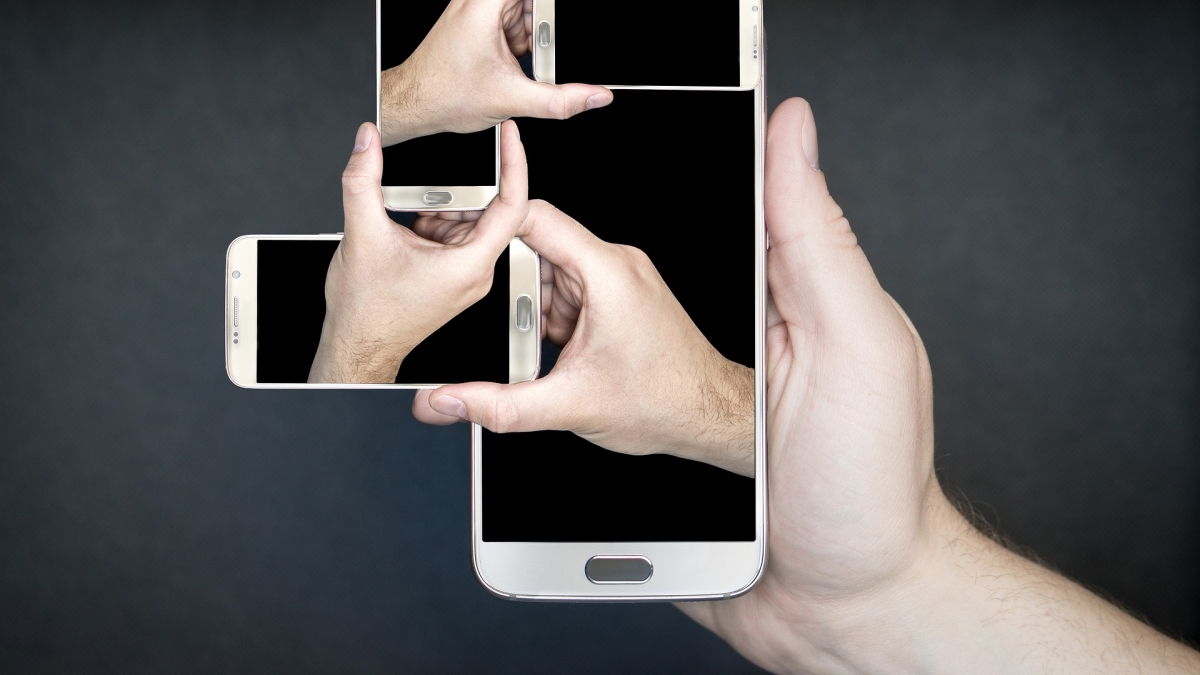Outside of work and sleep, you are likely to be staring at a screen: a TV, tablet, phone and the like. It’s the third most common discretionary behavior American adults do.
And you do it for an average of three-and-a-half hours every day.
So how do you kick the habit?
That’s what Arizona State University researcher Matthew Buman wants to find out.
Buman, an associate professor in the College of Health Solutions and director of the 24 Hour Behaviors Laboratory, is searching for volunteers who want to cut back on screen time.
“The primary goal is to identify ways to reduce the time people spend watching television and other screen time,” Buman said. “Our hypothesis is that it is leading to obesity as well as other chronic conditions due to the amount of time that when you're doing those activities, you tend to be sitting and highly sedentary. And so this program is designed to provide people with tools and support to reduce their screen time.”
There has been quite a bit of work in this area with children. The American Academy of Pediatrics recommends that children under the age of 2 get no screen time whatsoever, and then limited screen time into adolescence.
“But there've been very few programs that have actually started to think about the impact that this type of screen time is actually having in adults,” Buman said. “I think of this as a really unique opportunity to replace screen time with other potentially health promoting behaviors.”
If you free up an hour-and-a-half of your day, will you exercise? Sleep? Spend more quality time with friends and family?
“We're interested not just in reducing screen time, but then understanding how people are now going to be spending their time when they're given more time in their day,” he said. “That's an immense amount of time that people are devoting to this one particular behavior.”
Participants will use an app Buman’s lab has developed. (The irony is not lost on him). The app provides people with tools to spend less time watching TV or blankly staring at their phones.
Apple and Android devices have screen monitoring tools, which provide some ability to limit screen time. Buman wants to add to those with evidence-based strategies for reducing it.
People who do cut back report better overall well-being, as well as better mental health and stress management. They report better sleep and concentration.
“We are really interested in how people feel when they're kind of freed from the screen a little bit more, in addition to specific risk factors for chronic conditions like diabetes and heart disease,” Buman said. “We're interested in what effect this might have on reductions in weight, as well as overall cardiometabolic risk through things like glucose and insulin and other biomarkers that we know are indicative of future risk for product diseases.”
If you’re fine with the hours you spend on "Call of Duty" or Facebook, you’re not who the study is looking for. If you’re trying to cut back, you’re the ideal subject.
Here’s what the study entails:
You complete a screener on a website, a series of questionnaires at baseline. Lab members set up some technology in your home. How much time you spend on the screen gets integrated into the app. There will be an objective record of how much screen time you’re using. You get a Fitbit that you wear through the study (you get to keep the Fitbit at the end of the study). It monitors your activity level and the kinds of activities you're doing and sleep, and researchers get access to all of that data through the app.
“Through the combination of some of the technology that we put in the home, as well as the Fitbit, they get in the app and give a detailed report in real time of how much screen time they're using,” Buman said. “And based upon that, we help them set a goal to reduce their screen time after a baseline period. And then we give them a series of tools, and this is what we're studying. So there's different strategies that we provide. Some are focused on helping them better monitor how much screen time they're using. Some are sending them reminders and encouragement. Some are actually strategies around earning screen time through more activity.”
Participants use the app for 16 weeks, as well as answer questions to help researchers understand what other activities they’re doing and the contexts that screen time occurs in.
“We share results back with them," Buman said. "The other thing that we do is we do give them feedback continuously about both their screen time and their other activity behaviors and things like that. So they get a chance to get feedback on all those behaviors as they go through the program.”
If you’re interested in participating, fill out a screening survey or visit the Facebook page.
Top image courtesy Pixabay
More Health and medicine

Bird flu: Your questions on symptoms, spread and safety answered
Bird flu is no longer only “for the birds.”Infections have expanded beyond wild birds and poultry to a range of animals — from mice to mountain lions, dairy cows to domestic cats, and polar bears to…

Making medicine side-effect free
Many drugs that address medical conditions can come with serious side effects. In drug commercials, the litany of potential side effects is often longer than the benefits being touted. Carl…

Diagnostic research happening at ASU focused on detecting diseases earlier to save lives
It was one of America’s founding fathers, Benjamin Franklin, who may have foreshadowed today’s health care innovation when he quipped the adage: An ounce of prevention is worth a pound of cure.In…


